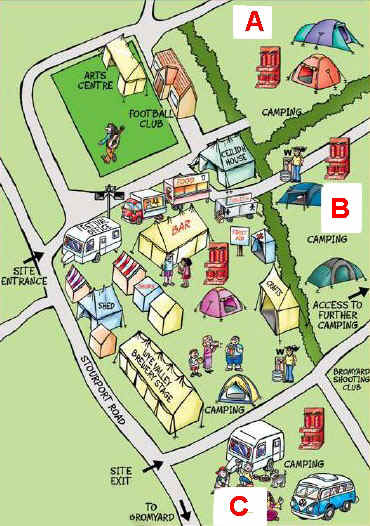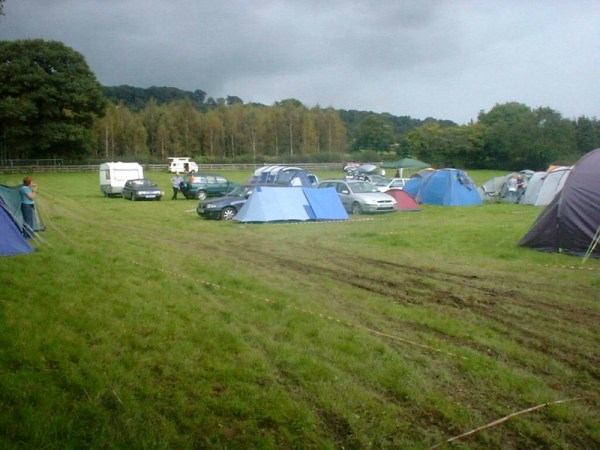 |
Friday started out bright and
sunny. More fine weather was forecast. I managed to pitch my caravan (left of picture) without assistance
- but it was a close thing with wheels slipping all the time on the heavy morning dew.
Go too fast and wheels will dig deep ruts -
and then stall.
Go too slow and the vehicle will lose
momentum over any small bumps and then stall. |
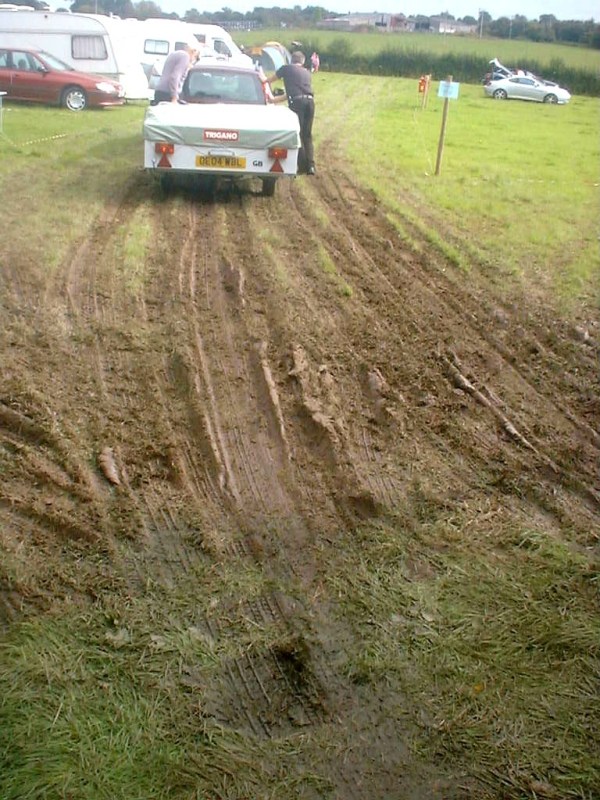 |
The entrance to the top field
on the first day. With only a
few vehicles on site, the area around the entrance was already becoming impassable except
for 4x4 vehicles.
And the mud was becoming so slippery that
even 4x4s exhibited wheelspin.
The technique at this stage was to take the
entrance at a moderate speed - fast enough to get you over the worst area.
Volunteers then helped by leaping from the
sidelines - no-one seemed to bother with 'Elf and Safety. No reflective or hi-viz jackets
either!
It worked for a short while but a violent
rainstorm early on the Friday evening waterlogged much of the ground just as many people
were arriving.
I spent a couple of hours snoozing. |
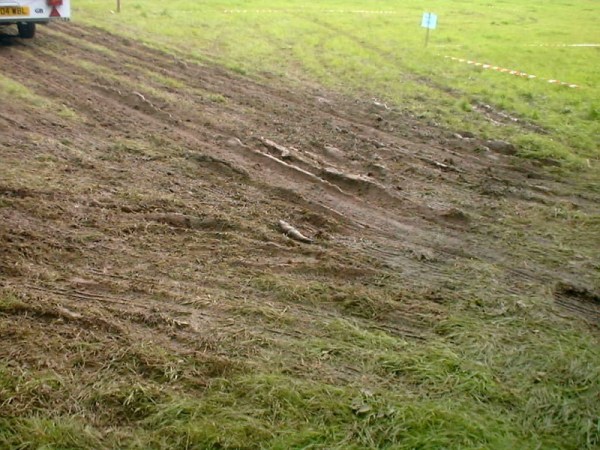 |
View of the same mud as above. Although the ruts were not deep at this stage the
ground was becoming somehow emulsified into a thick semi-liquid paste having remarkable
non-grip properties.
For a while, 4x4s were used to tow new
arrivals into place.
The bottom area of the field contained a
particularly boggy area.
A large 4x4 became stranded for some
time.... |
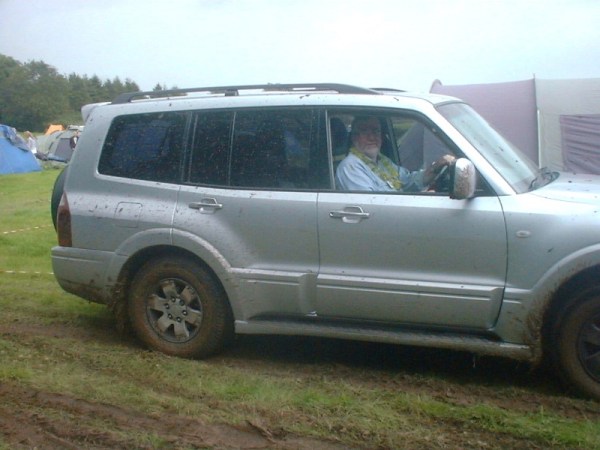 |
£30,000 worth of motorway 4x4
proved almost useless in negotiating the thick sticky mud, even on the first morning. This vehicle, driven by one of the festival
directors, had to be rescued.
A few days later, he confessed that this was
the first time on this site that things had been so bad and that "they had learnt a
lot about how to do it next time". |
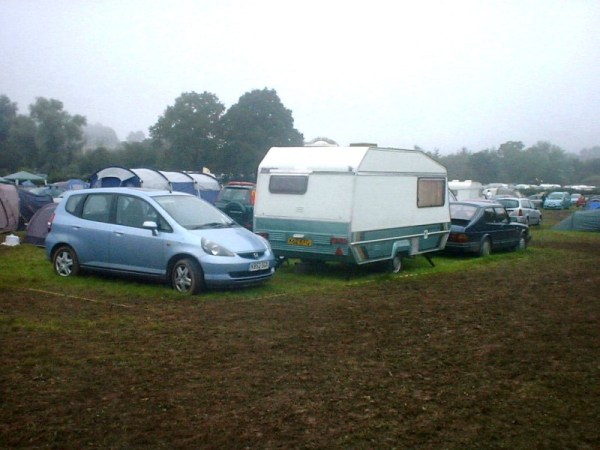 |
A home from home, surrounded by
a wide muddy track. Fortunately
the track was passable all weekend in wellingtons or stout shoes.
I kept my car and caravan coupled up - thus
aiding subsequent escape.
After three days, the car wheels had sunk an
inch or so into the ground - whilst the caravan was still supported on its stabilisers.
|
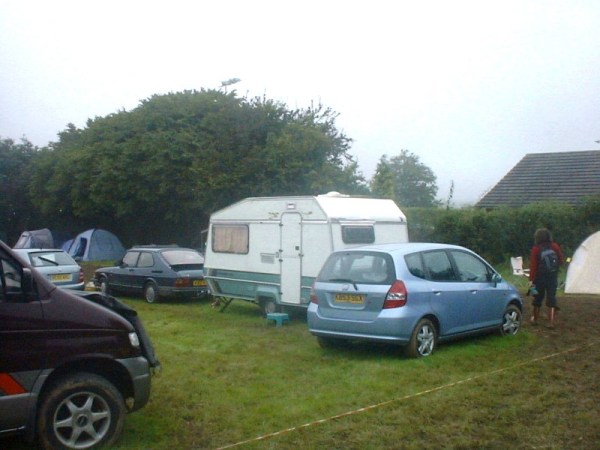 |
After the Friday evening
rainstorm, the undisturbed grass was very squelchy but passable with care on foot. By Monday morning it was becoming firm again. |
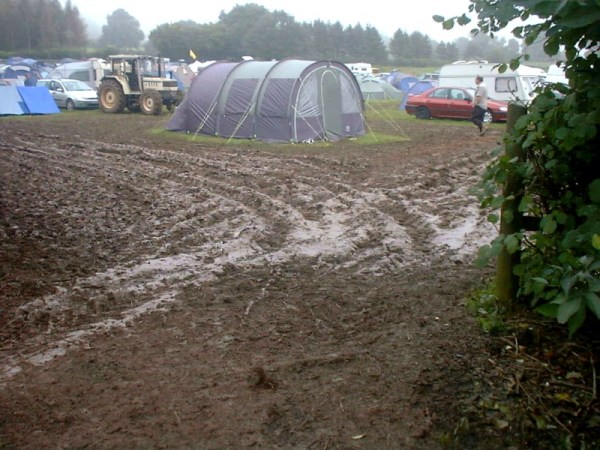 |
Thick sticky mud at the bottom
of the main camping field on Sunday afternoon. Anyone who walked here sunk down about 125mm (5 inches).
The trick seemed to be to keep moving - if
you stood still for any length of time, your boots were difficult to release from the mud
that had enveloped them.
Tractors had difficulty changing direction
and the rims of car wheels disappeared from view. |
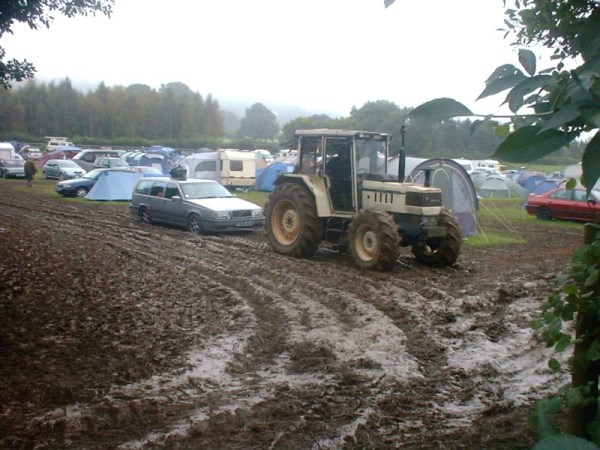 |
Abandon hope all ye who enter
here..... A small amount of
rain had much rejuvenated the mud - just in time to inconvenience the many people who
wanted to leave on the Sunday afternoon.
Staying until mid morning on the Monday
proved the best course - but many people had to get back to work - poor things!
Novice tractor drivers received extra tips
for going slowly around corners. |
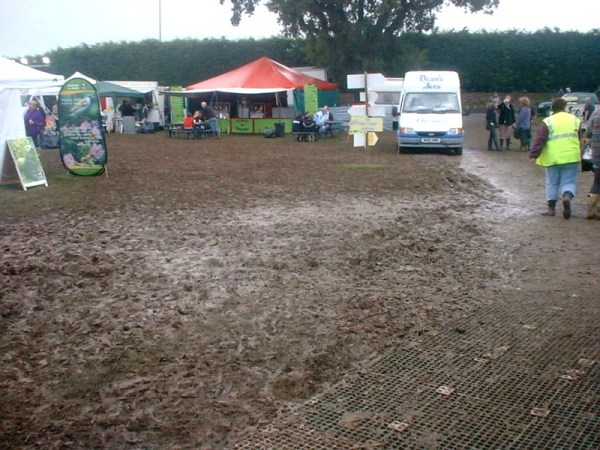 |
Part of the main picnic(?!) and
eating area. Water run-off
created an area of mud that was so liquid it slowly flowed back into place after being
disturbed.
Fortunately the organisers had laid grid
roadways to take vehicles down into the main camping areas (B and C).
These grids worked very well - despite
becoming submerged in places. |
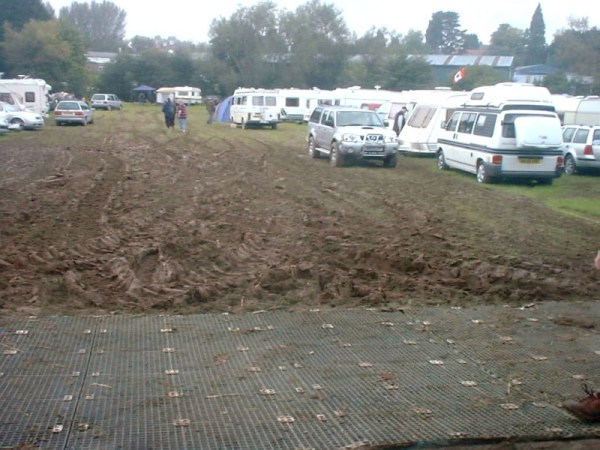 |
The main caravanning field,
area C. Despite being at the
bottom of the site (and covered in up to 300mm of flood water the week before!) it drained
well owing to having been constructed as a football training area - with a matrix of
underground drainage channels.
Needless to say, the churned up roadways
became impassable even to 4x4 vehicles.
The temporary roadways worked very well -
but first you had to get to them! |
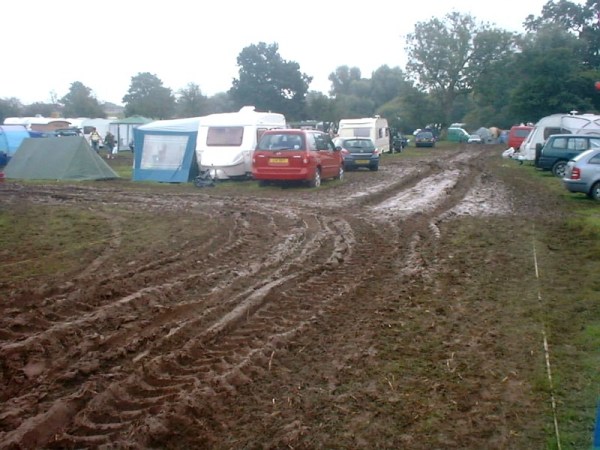 |
Camping area B, Sunday
afternoon. If you tried to
take this corner too fast you just went straight on - even in a tractor.
The mud was still too liquid for deep ruts
to form. |
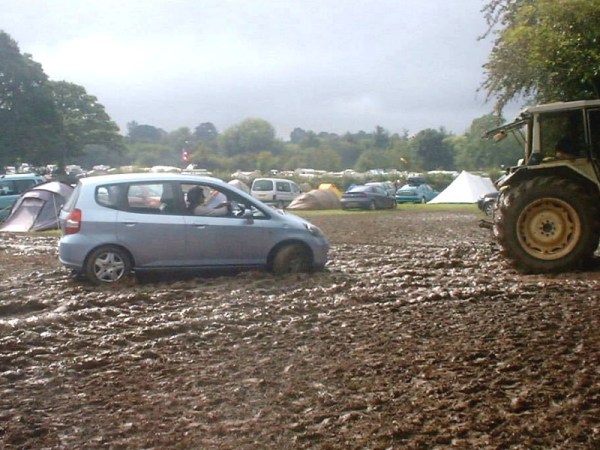 |
Area A on Sunday afternoon saw
the mud at its worst. Applying
full opposite lock in an attempt to get a car correctly aligned for the gateway.
This car was being pulled around a right
hand curve, despite the steering wheel having been turned fully left.
Steering was ineffective because the wheels
were being dragged sideways through the mud rather than being able to turn. |
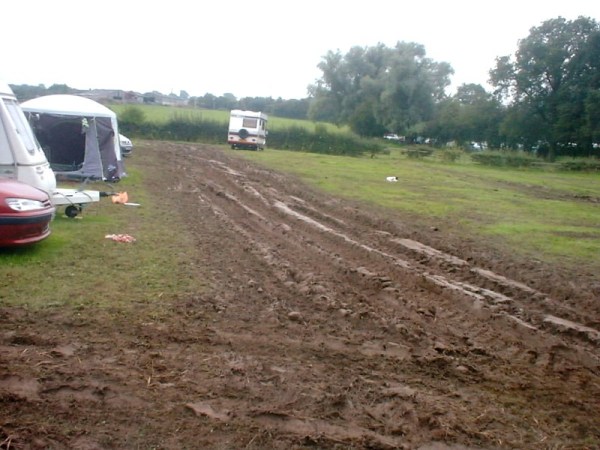 |
The top field on the final
departure day (Monday). After
some good weather overnight, the ground was much less of a problem than on the Sunday.
The mud was now much firmer and the ruts
near to the gateway became so deep that vehicles being towed out 'planed' the peaks with
their undersides. |
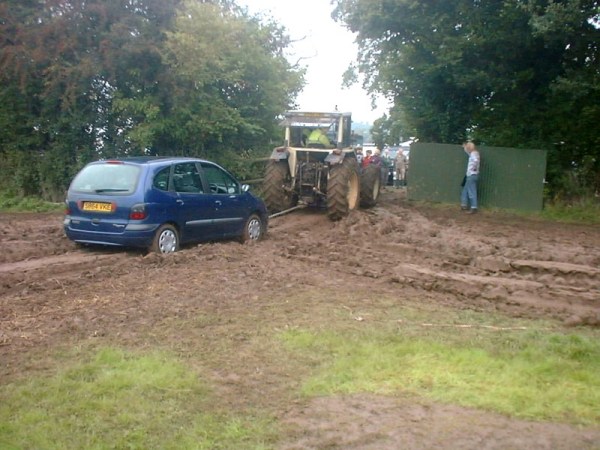 |
This was the easy bit. Provided that at this point your car wheels were
firmly located in the main ruts then no matter which way you turned the steering wheel the
direction of travel was largely determined by the towing chain and the deep ruts - the
wheels being unable to move out of these. |
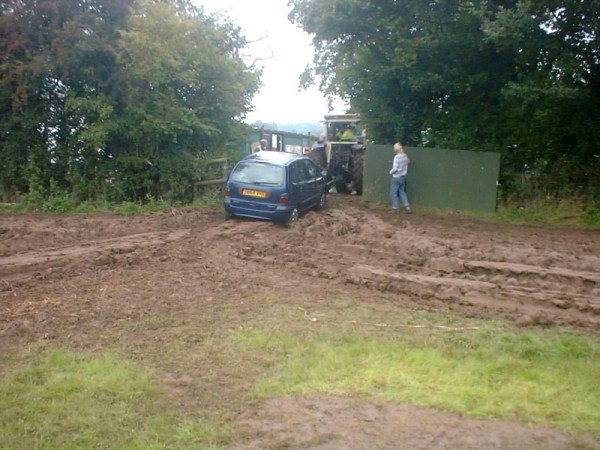
|
